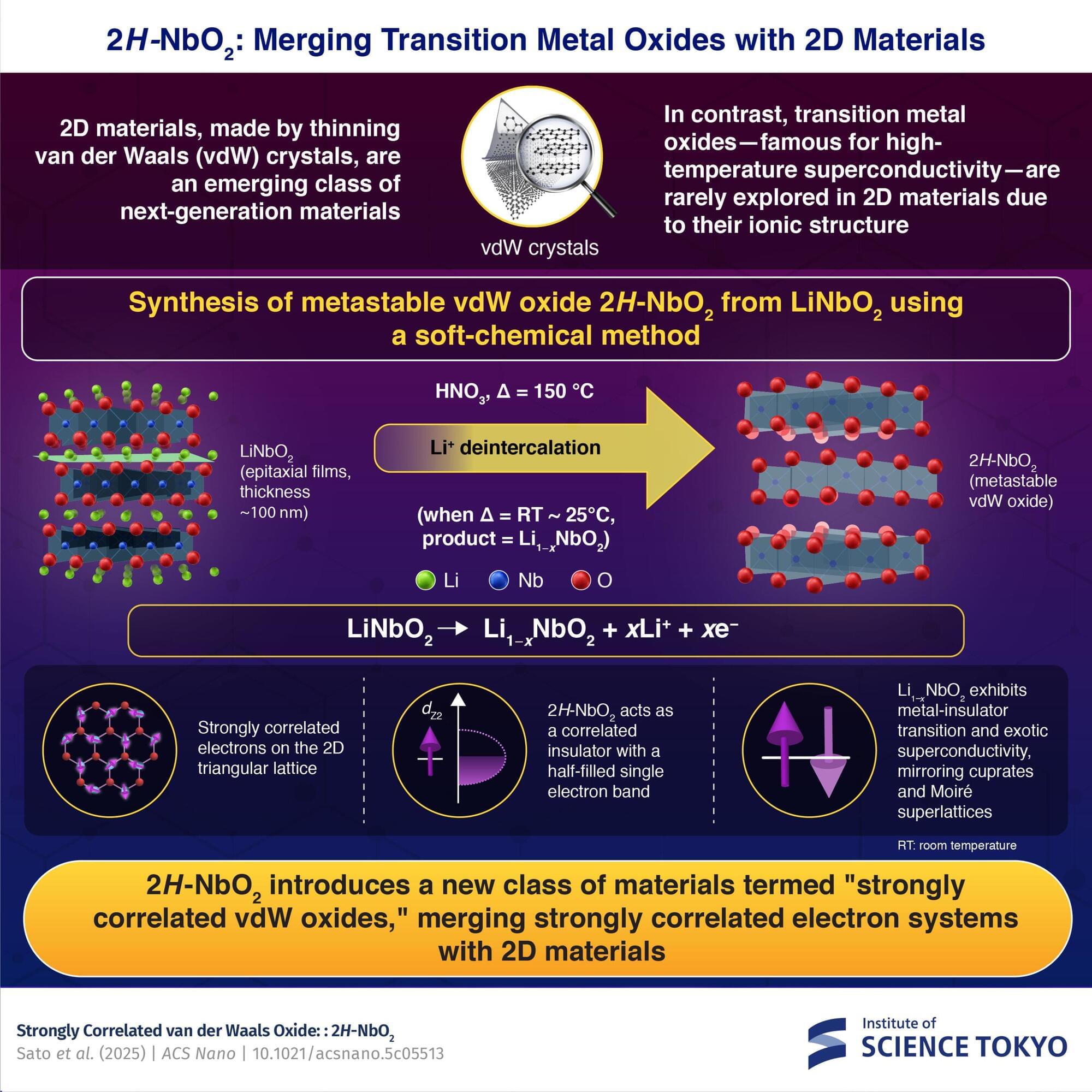2H-NbO₂—a novel van der Waals oxide synthesized by researchers from Japan—exhibits strongly correlated electronic properties with two-dimensional flexibility. By chemically extracting lithium ions from the layered sheets of LiNbO₂, the researchers transformed a three-dimensional oxide into a two-dimensional material—unlocking unique properties like Mott insulating states and superconductivity. Bridging transition metal oxides and 2D materials, the discovery paves the way for realizing advanced quantum materials in next-generation electronic devices.
Two-dimensional (2D) materials have become a cornerstone of next-generation electronic research. These materials—with their layers held together by weak van der Waals (vdW) forces—are celebrated for their unique quantum properties and promising applications in electronics. However, despite significant progress in 2D materials like graphene and transition metal dichalcogenides, one attractive family of materials called “transition metal oxides” or TMOs, remains unexplored for 2D application.
TMOs are a versatile class of materials known for their complex electronic properties like superconductivity, magnetism, and metal-insulator transitions. But due to their inherently strong ionic bonding, these oxides do not typically form vdW structures and therefore remain absent from 2D materials basically.
